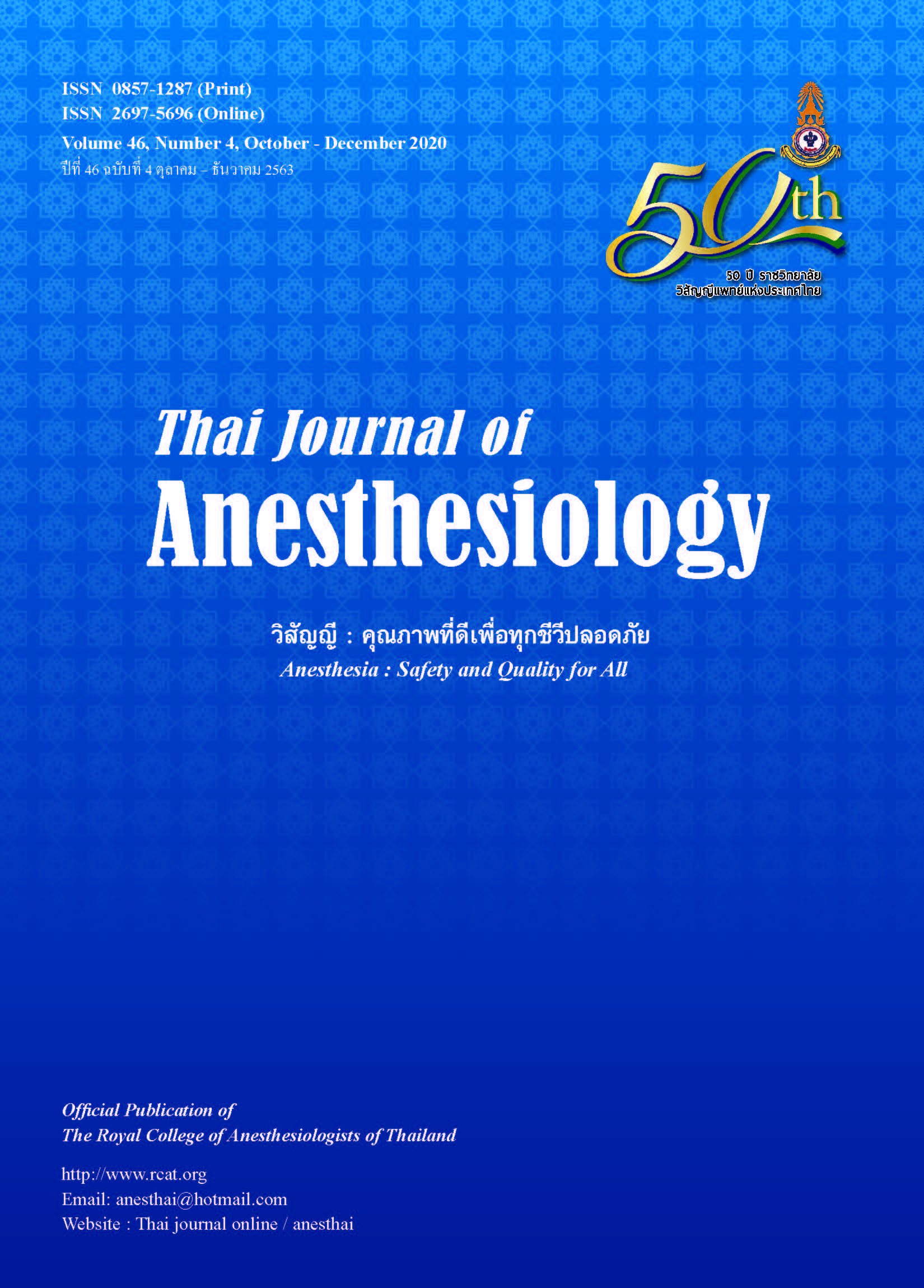Pediatric Endotracheal Tube Size Prediction: A Comparison among Ultrasound Measured Subglottic Diameter, Age-Formula and Little Fingernail Width Methods
Main Article Content
Abstract
Background: There are many methods to estimate pediatric uncuff endotracheal tube (ETT) size. These methods have varied reliability, so this study aims to compare prediction accuracy between the three methods which are subglottic diameter measurement by ultrasound, age-based calculation and little fingernail width Methods: A total of 45 children, aged 1 -6 year who were scheduled for surgery and intubated for general anesthesia, were included in the estimation of uncuff ETT by the three methods. After the predictions were compared with the actual ETT, the primary outcome was to identify the accuracy of each of the three methods as a percentage. Subgroup analysis aims to find correlation between the accuracy of prediction and weight, height, ASA physical status of the patient Results: The accuracy of the ETT size prediction as a percentage using the three methods of subglottic diameter measurement by ultrasound, age-based calculation and little fingernail width comparison were 51.1%, 62.2%and 51.1% respectively. No significant difference was found between the three methods (P-value=0.47). There is no correlation between the accuracy of each methods and weight, height, ASA physical status of the patient Conclusion: There is no difference in accuracy to pediatric uncuff ETT estimation between the three methods discussed previously.
Article Details
References
C, Niwa H. Age-based prediction of uncuffed tracheal tube
size in children to prevent inappropriately large tube
selection: a retrospective analysis. BMC Anesthesiol
2019;19:141.
2. Raksamani K, Atisook R, Samerchua A, Manomayangkul K,
Aroonpruksakul N. Predicting uncuffed endotracheal tube
size in anesthetized children by ultrasonography:
A randomized controlled trial. J Medical Assoc Thai
2018;101:117-23.
3. Schramm C, Knop J, Jensen K, Plaschke K. Role of
ultrasound compared to age-related formulas for uncuffed
endotracheal intubation in a pediatric population. Paediatr
Anaesth 2012;22:781-6.
4. Shibasaki M, Nakajima Y, Ishii S, Shimizu F, Shime N, Sessler
DI. Prediction of pediatric endotracheal tube size by
ultrasonography. Anesthesiology 2010;113:819-24.
5. King BR, Baker MD, Braitman LE, Seidl-Friedman J, Schreiner
MS. Endotracheal tube selection in children: a comparison
of four methods. Ann Emerg Med 1993;22:530-4.
6. Bae JY, Byon HJ, Han SS, Kim HS, Kim JT. Usefulness of
ultrasound for selecting a correctly sized uncuffed tracheal
tube for paediatric patients. Anaesthesia 2011;66:994-8.
7. Lakhal K, Delplace X, Cottier JP, et al. The feasibility of
ultrasound to assess subglottic diameter. Anesth Analg
2007;104:611-4.
8. Carbone T, Marrero LC, Weiss J, Hiatt M, Hegyi T. Heart rate
and oxygen saturation correlates of infant apnea. J Perinatol
1999;19:44-7.
9. Gnanaprakasam P, Selvaraj V. Ultrasound assessment of
subglottic region for estimation of appropriate endotracheal
tube size in pediatric anesthesia. J Anaesthesiol Clin
Pharmacol 2017;33:231-5.
10. Khine HH, Corddry DH, Kettrick RG, et al. Comparison of
cuffed and uncuffed endotracheal tubes in young children
during general anesthesia. Anesthesiology 1997;86:627-31.


